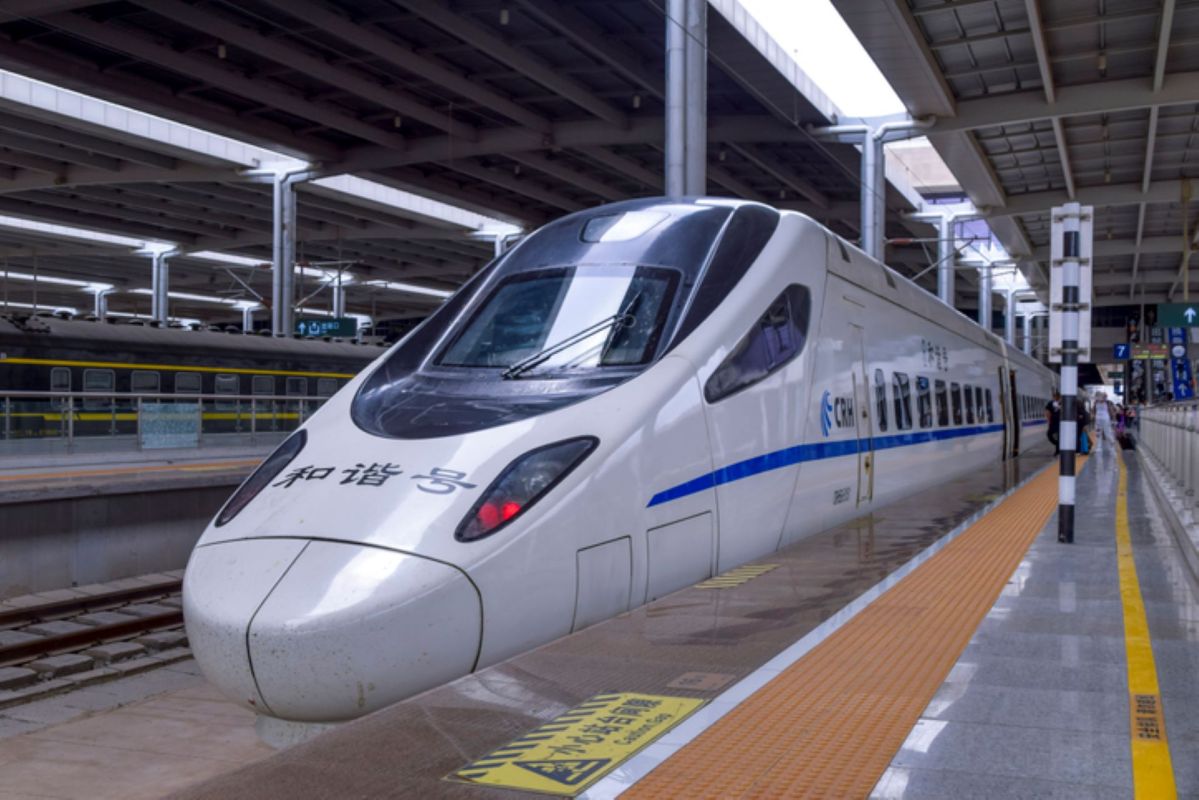Public transportation in cities across the United States leaves a lot to be desired.
The situation is even more frustrating when compared to China, specifically the country's high-speed rail system.
TikToker Rob Jones (@tvmeteorologist) shared a map of the network in December, noting how it had expanded exponentially since 2008.
@tvmeteorologist #stitch with @chacebarber #highspeedrail #highspeedrailsystem #usinfrastructure #infrastructurebill #chinahighspeedtrain #chinahighspeedrailway @Amtrak #acelaexpress #amtrakacela #greenscreen ♬ original sound - Rob Jones - Meteorologist
"What are we doing in the U.S.?" Jones said.
China opened its first high-speed train, between Beijing and Tianjin, in 2008. Now, the lines span 25,000 miles. The system is projected to stretch to 31,000 miles by 2025 and more than 124,000 miles by 2035, according to the South China Morning Post.
CNN noted the U.S. has only one high-speed rail, the Acela route in Amtrak's Northeast corridor, which runs from Boston to Washington, D.C., or 457 miles.
China's high-speed trains have set records, but mostly travel up to 217 miles per hour. CNN reported that "intercity travel has been transformed, and the dominance of airlines has been broken on the busiest routes," as 75% of cities with a population of 500,000 had a high-speed train link by 2020.
There are 37 cities in the U.S. that meet that mark. China has 145 cities with more than a million people.
In 2018, the Environmental and Energy Study Institute listed a handful of reasons for America's lack of high-speed rail development, including an emphasis on driving, the difficulty of shifting to public transit with infrastructure designed for automobiles, and political interference by "extremely wealthy individuals who want to suppress interest in railroads to maximize fossil fuel use."
California is building a 500-mile high-speed rail from the Bay Area to the Los Angeles Basin, but it won't be completed until 2033. The first section of the route, 171 miles in the Central Valley, is expected to be done by 2028. A later phase of the project will extend it to Sacramento and San Diego.
The first "true" high-speed train in the country could trek from Las Vegas to Southern California.
Texas is also exploring a line from Houston to Dallas, but the idea has been beset by problems.
High-speed trains are "the single largest climate solution that can decarbonize the majority of our transportation network quickly," according to the U.S. High Speed Rail Association. The International Union of Railways showed that even commuter trains are far more efficient than buses, cars, and planes, and they produce far less carbon dioxide pollution than cars and planes.
A 2021 study showed China's stunning rails reduced vehicle-produced air pollution. The authors noted the country could fully realize the benefits of high-speed trains by using greener electricity.
Some TikTokers pointed out that public transportation puts exorbitant costs on the government, though others noted the priorities of such officials are out of whack.
"This is what happens when your budget goes to the military instead of the country itself," one user wrote.
Another said: "But if we spend our tax money on infrastructure how will the ruling class keep their yachts afloat? It's a serious problem we all must solve."
Someone else said: "The public transport/infrastructure is the only viable criticism of America tbh. We really need to step up our game there."
One user echoed a solution to a problem noted by the EESI: "[The U.S.] has more tracks via freight tracks. Just a matter of putting passenger trains on them."
Join our free newsletter for weekly updates on the coolest innovations improving our lives and saving our planet.









